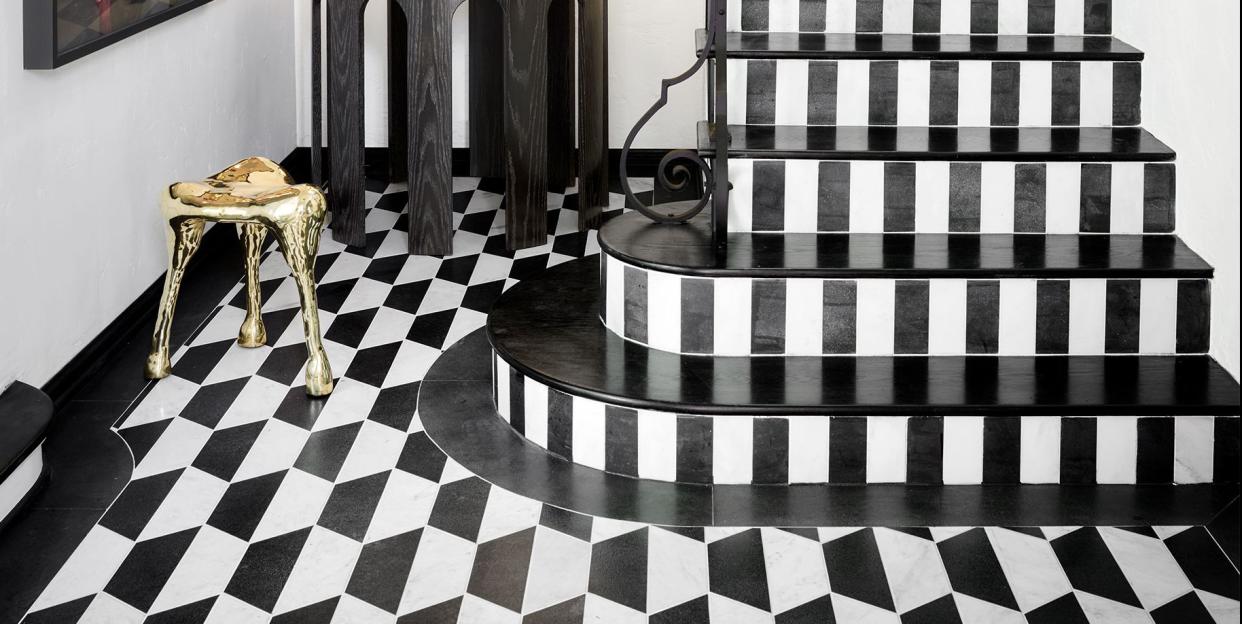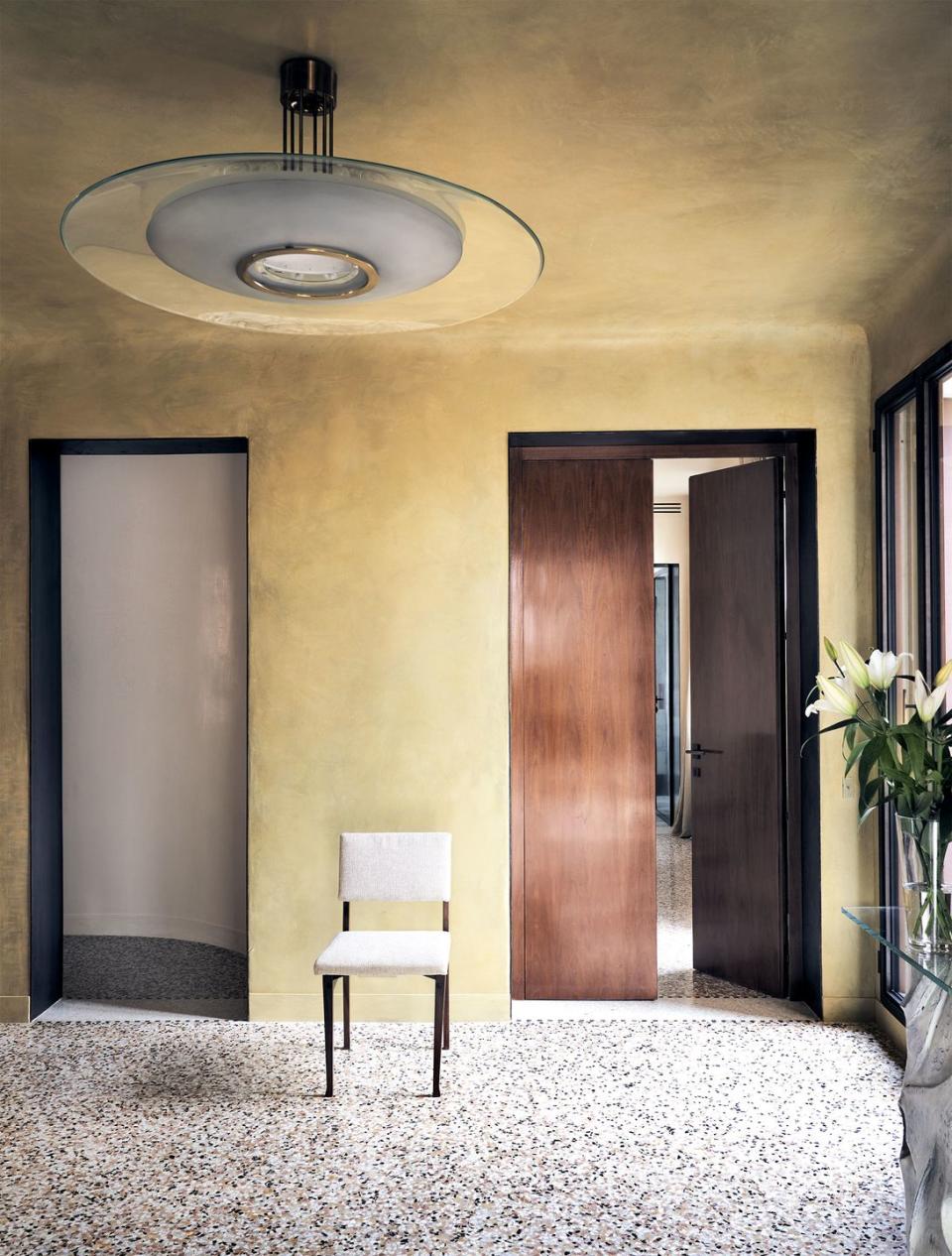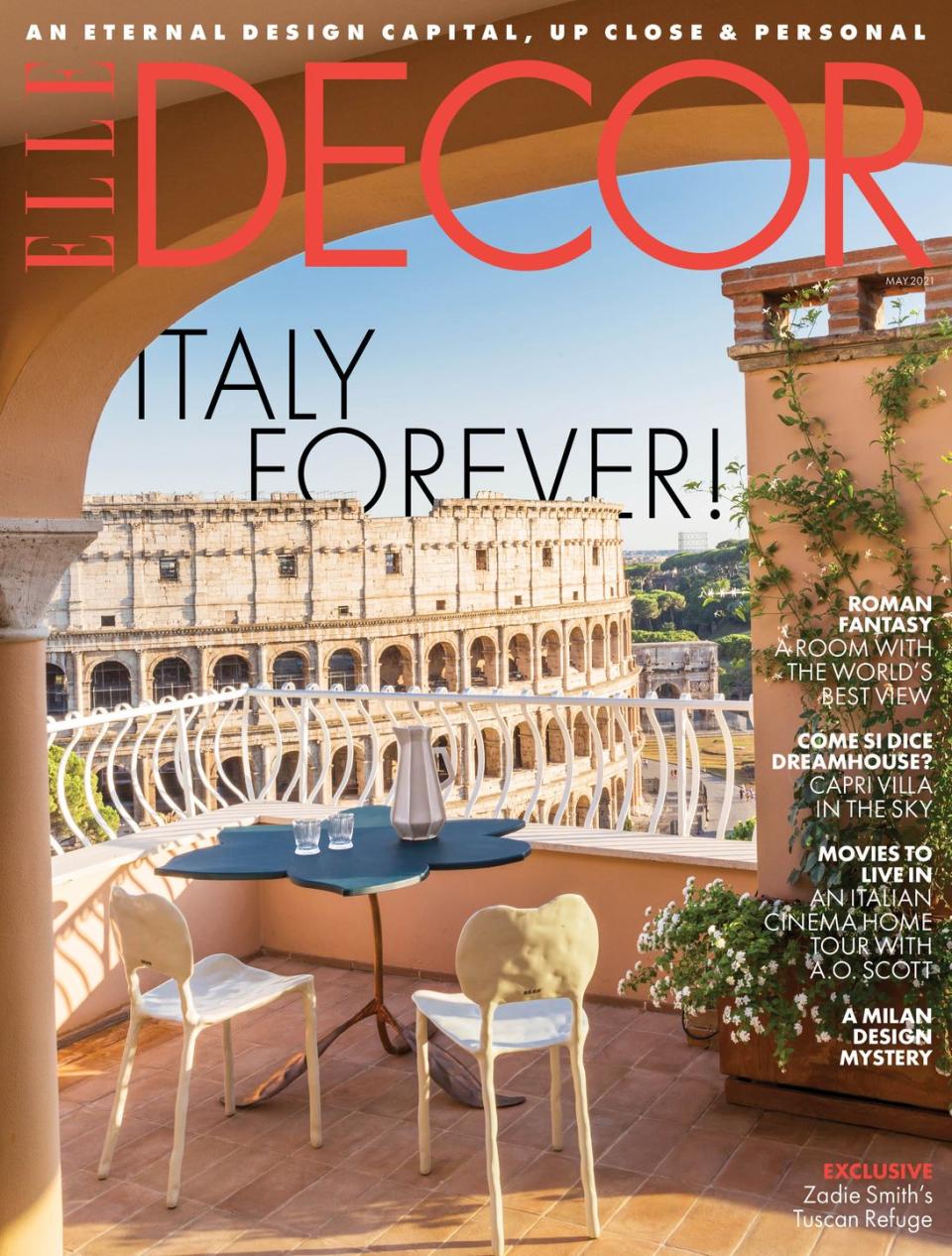Naturally, Italy Has the Most Expressive, Eye-Popping Floor Tiles Anywhere

The trattoria was nothing special, but its floor grabbed my attention. After a day strolling the Mediterranean beach and cobbled lanes of Italy’s Sestri Levante, I was hunting for an aperitivo when I saw it—a decades-old composition of hexagonal tiles with a diamond pattern in three colors that created an illusory three-dimensional field of cubes. That such a graphic statement was present in a timeworn trattoria, where sandy shoes and sloshed Negronis ruled, was unexpected. But in Italy, a country that has a long history of producing dramatic tile, it usually doesn’t take long to find inspiration underfoot.
“In Italy, flooring is the most important element of the house,” says Paolo Colucci, an interior designer based in Rome. “It’s because tile production began very early, and Italians have always embraced it.”

Italy’s history of showstopping floors dates from Roman times, when artisans in Pompeii created elaborate mosaics using chips of colored stone to depict everything from geometric patterns to snarling dogs and battles against sea creatures. In the 15th century, residents of southern Italy began producing rustic terra-cotta and, as they refined the process, started experimenting with decoration.
“On occasion, in old, aristocratic houses, you’ll see this lovely terra-cotta in very good condition because it was covered by carpets for centuries,” says Colucci, adding that ancient tile can sometimes look surprisingly current. “Often, you discover fantastic patterns that look like what you would see now.”
By the late 16th century, artisans along the Amalfi Coast began producing riggiole tiles with hand-painted nature and religious scenes. At the same time, Venetians invented terrazzo by combining marble chunks in mortar and grinding the mix flat to reveal a confetti-like spray of color. In the 20th century, Gio Ponti designed tiles glazed with boldly geometric patterns, including the blue-and-white ceramics he created for the Parco dei Principi hotel in Sorrento, where each guest room has different patterns underfoot, and some expanses of tile are inset in marble, like clay rugs.

Today, manufacturers in Italy continue to push the technological envelope, and are producing tiles with three-dimensional glazed surfaces for added texture; porcelain tiles with photorealistic representations of marble and wood; wafer-thin tiles that can be installed over existing floors; and extraordinarily large-format tiles to rival the size of stone slabs. Almost all of it—mosaics, terra-cotta, hand-painted tile, terrazzo, bold geometrics, and high-tech porcelain—remains popular today. The choice simply depends on what you want to achieve.
Rome-born, Chicago-based interior designer Alessandra Branca is currently developing tiles based on 18th-century hand-painted faux-bois Italian designs for a home in Palm Beach. “Tiles are a wonderful way to add embellishment,” she says. “Not in the sense of adding ruffles, but by creating a visual articulation of space.”

The New York City–based interior designer Michelle Gerson has similarly embraced tiles for both aesthetic and functional reasons. “I’m starting to do more tiled floors, in foyers, kitchens, and mudrooms,” she says. “The truth is that a tile floor is so much more durable than one made of wood.” For Arlene Gibbs, an American designer based in Rome, there is no beating the classic appeal of terra-cotta. “But it’s not your nonna’s terra-cotta,” she says. “Not that burnt orange. It’s lighter in color, and there’s more texture.”
As for the unexpectedly arresting hexagonal design I spotted in Sestri Levante, numerous manufacturers now produce the same pattern. But, like so many motifs in Italian design, it is far older than it appears—the same design can be found in the unearthed ruins of Pompeii, adorning a floor in the House of the Faun. It doesn’t get any more timeless than that.

This story originally appeared in the May 2021 issue of ELLE Decor. SUBSCRIBE
You Might Also Like

 Yahoo Movies
Yahoo Movies 
